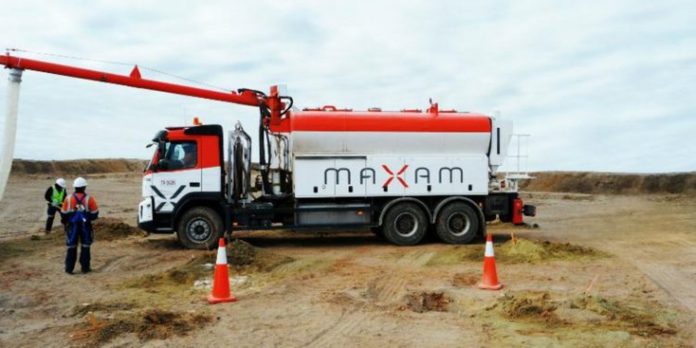Government has outlined some 14 conditions for Maxam Limited, the company at the centre of the explosion that occurred at Apiate near Bogoso in the Western Region.
These conditions, in a statement signed by the Lands and Natural Resources Minister, Samuel Abu Jinapor, must be met before their permit will be restored following a shutdown on January 22, 2022.
Already, a fine of $6 million has been imposed on the company after an investigative committee report on the explosion that killed 13 people with scores injured and the community wiped out.
Mr Jinapor’s statement has indicated the company, among other things, can no longer transport explosives on public roads.
The statement added it can only do so unless a notice of the transportation is given to the Chief Inspector of Mines or the Regional Mines Inspector, at least 48 hours before the schedule.
ALSO READ:
Aside from this, the company is expected to comply with other measures including inspection, verification and recording of the explosives in a log book.
Read the full conditions below:
1. Maxam shall not transport explosives on a public road, unless notice of the transportation has been given to the Chief Inspector of Mines or the Regional Mines Inspector, at least, forty-eight (48) hours before the scheduled time for transportation, to enable the requisite inspection and certification to be carried out before the transportation of the explosives to a mine or quarry site.
2. An Inspector of Mines/Explosives shall be present, inspect, verify and record in the designated explosives logbook for transportation, that all the requisite safety requirements, rules, and protocols have
been met before explosives are transported from the operational site of the company to a mine or quarry site.
3. An Inspector of Mines/Explosives shall physically inspect the explosives truck to ensure that the explosives truck is in good
working condition, in accordance with the truck examination list,
and that the truck driver has a professional driver’s license to drive the vehicle before the loading of the explosives into the truck.
4. All trucks used by the company in carting explosives shall have:
a. A red flashing light clearly visible at least a hundred (100) meters away;
b. A klaxon or siren, hooter or automatically operated bell;
c.An automatic fire suppression system alongside the fire extinguishers;
d. A tracking system to monitor the speed and movement of the explosives truck;
e. An integrated monitoring system to check driver fatigue;
f. A megaphone to warn people or bystanders in case of danger;
g. Drive cameras to monitor the explosives’ truck drivers.
5. Before each explosives’ truck takes off from the operational site of the company, the waybill for the transportation shall be endorsed by an Inspector of Mines Explosives who shall be satisfied that the explosives are under the direct control of a person who has a certificate of competence, in accordance with regulation 15 (2) of LL2177.
6. All trucks transporting explosives must be accompanied by escort vehicles which shall be inspected by an Inspector of Mines, and all the details recorded in the Inspector’s Field Book.
7. Escort vehicles must have:
a. A red flashing light clearly visible at least Fifty (50) meters away; and
b. A klaxon or siren or hooter or automatically operated bell.
8. The transportation of explosives on public roads shall have two (2) Escorts: one (1) leading the explosives truck and maintaining a distance of at least fifty metres (50m) and at most sixty metres (60m) from the vehicle carrying the explosives, with a uniformed and Armed Police Officer, and the other behind the explosives truck and maintaining a distance of at least twenty metres (20m) and at most thirty metres (30m), with an unarmed but uniformed police officer.
9. Competent persons accompanying explosives trucks shall notify the Regional Inspector of Mines in the Region upon arriving at their destinations and indicate the arrival times in a designated logbook for that purpose.
10. The company shall not, unless otherwise expressly permitted by the Chief Inspector of Explosives, transport Ammonium Nitrate and Fuel Ol (ANFO) on a public road to a mine or civil work site.
11. A person who drives an escort vehicle shall not drive faster than sixty (60) kilometres per hour.
12. Competent persons accompanying explosives shall be trained in the Code of Safe Working Practice (Code of Safe Operating Procedure) for transportation of Explosives along Public Roads and shall carry the code with them.
13. The Explosives Manager shall develop the Code of Safe Working Practice and the code shall be approved by an Inspector (Regulation 515 of L.I. 2182 and Regulation 11l of L.I. 2177).
14. The transportation of Ammonium Nitrate from or to the operational site of a registered mine support service company with the requisite permits or to a mine site shall be regulated by LI. 2177.


